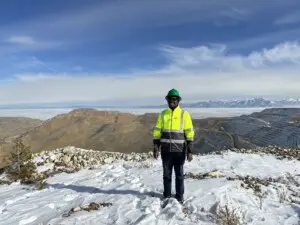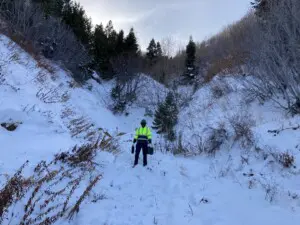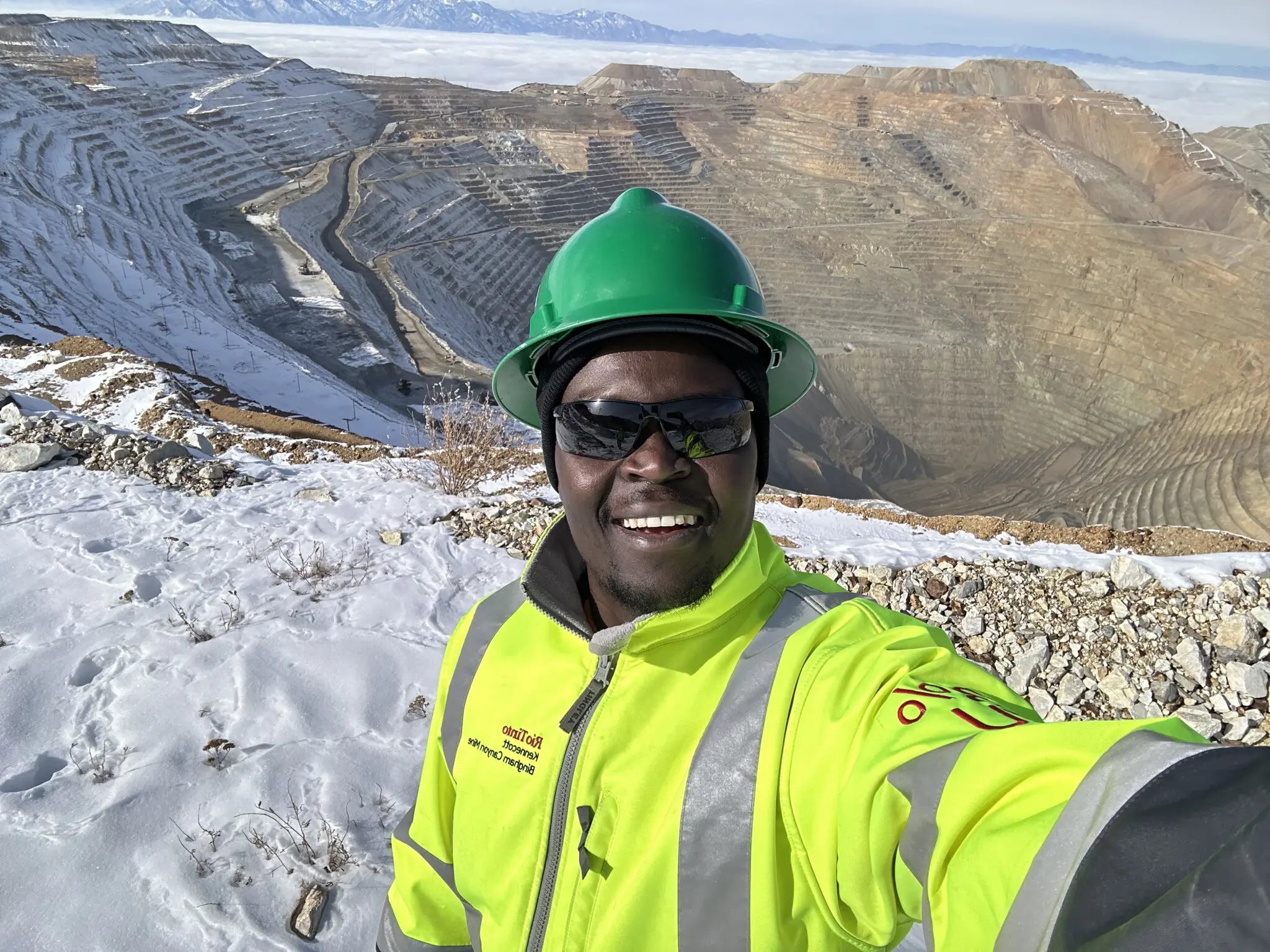Tell us a bit about your background. What brought you to CRC TiME and the field of mine closure and transitions?
I am a PhD candidate at the Sustainable Mineral Institute (SMI), University of Queensland. My PhD project is with the Centre for Water Management in the Minerals Industry (CWiMi). An environmental engineer with a master’s in water resources and considerable consultancy experience. In 2022, I received the CRC TiME top-up scholarship for my PhD project, which is aligned with CRC TiME research activity in the Operational Solutions program.

Ben in snowy Utah
What topic are you delving into for your PhD?
My research focuses on the future impacts of climate change on pit lake water balance. Understanding the water balance of pit lake mines is crucial for mine planning, operations, and post-closure regional sustainable development.
It is important to determine whether a pit lake may become a liability in the future due to the impact of climate change. My work with CRC TiME will assist the mining industry in selecting pit lake hydrology models that minimise uncertainty in predicting water levels.
Additionally, it aims to identify key data that can be collected to reduce uncertainty and risk while also understanding the relevance of climate change in the context of other elements of uncertainty and risk. One potential application of this research is determining if pit lakes can be used for economic activities post-closure.
Tell us about your placement with Rio Tinto – what was involved and what did you gain from the experience?
As part of the CRC TiME top-up scholarship requirements, including a placement with one of its partners, I undertook a four-month full-time placement with Rio Tinto in the Copper Technical Group. My project at Rio Tinto focused on investigating the responses of piezometers within the Bingham Canyon Mine to pumping wells, rainfall and snow recharge, drainage galleries, and atmospheric pressure variations. The project, proposed by Rio Tinto’s hydrogeology team, aimed to optimise depressurisation activities and enhance the hydrogeological conceptualisation of Bingham Canyon Mine in Utah. This project was outside the scope of my PhD research topic, and it involved extensive modelling and time-series analysis of groundwater data.
During my placement, I utilised the research skills acquired through my PhD project, such as programming and problem-solving abilities, to ensure the completion of the project within a shorter timeframe. I also learned and developed various skills, including teamwork, as I collaborated with a large team across the USA and Australia. Project management skills were another crucial aspect, as I had the opportunity to work independently and take charge of the project. Additionally, I acquired new programming skills, including SQL, and gained experience working with large databases spanning over decades of data. This placement has been a valuable and positive experience, strongly contributing to developing my confidence in my chosen career path.
For Rio Tinto, the results of this project will significantly contribute to the planning and improvement of dewatering activities, resulting in substantial savings of resources and time. The final tool developed was well-received by the hydrogeology team, and I conducted a series of training sessions to guide the team on how to use the tool effectively. The hydrogeology team at Rio Tinto is now exploring the possibility of expanding the project to other mine sites.
 You travelled to Utah to conduct site visits – what did you get up to?
You travelled to Utah to conduct site visits – what did you get up to?
Travelling to Utah was a remarkable experience for me. Visiting the deepest mine on the planet was breathtaking, and working in the snow and very cold weather added a unique dimension to my journey. I had the opportunity to assist in installing transducer sensors to monitor surface water runoff due to snow melt, engage in daily surface water and groundwater monitoring around the mine site, and participate in drilling activities for monitoring wells. Additionally, I was part of the hydrogeology and geotechnical team at Bingham Canyon Copper Mine.
During my time there, I delivered a presentation on the project’s outcomes to both the hydrogeology team in the US and the surface mining team here in Australia.
What is the biggest challenge you see in your field?
One of the significant challenges in mining hydrogeology is managing and mitigating the impacts of mining activities on water resources. Mining operations can alter an area’s hydrogeological characteristics, leading to changes in groundwater flow, water quality, and overall hydrological balance. Contamination of water sources, depletion of aquifers, and the potential for long-term environmental damage are key concerns. Given the size of the final mine void, like Bigham Canyon Mine, it presents a significant challenge to rehabilitating the final void sustainably.

